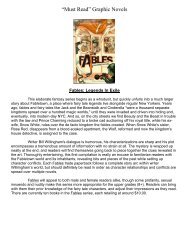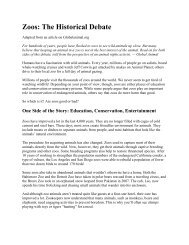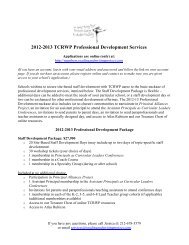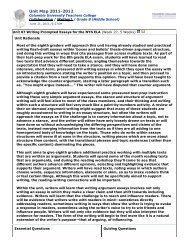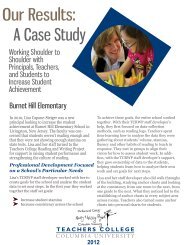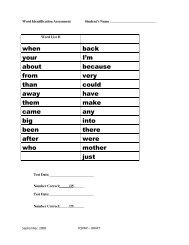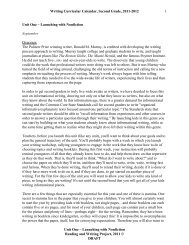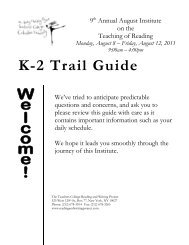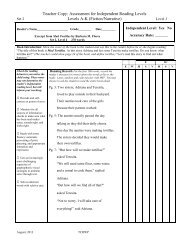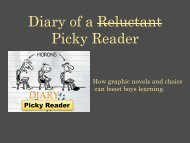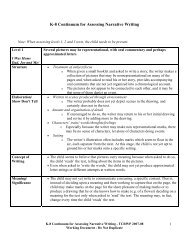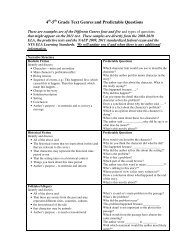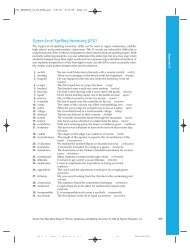Student Facing Checklist for Narrative Writing, Grades K-10
Student Facing Checklist for Narrative Writing, Grades K-10
Student Facing Checklist for Narrative Writing, Grades K-10
Create successful ePaper yourself
Turn your PDF publications into a flip-book with our unique Google optimized e-Paper software.
<strong>Student</strong> <strong>Facing</strong> <strong>Checklist</strong> <strong>for</strong> <strong>Narrative</strong> <strong>Writing</strong>, <strong>Grades</strong> K-<strong>10</strong>OverallLead<strong>Narrative</strong> <strong>Checklist</strong>Grade 9/<strong>10</strong>StructureI not only created a narrative with characters, tension,change, and an idea/lesson, and made the charactercomplex, I also developed particular perspectives, orpoints of view.The beginning defines a situation, place, atmosphere,sets it within some kind of context, <strong>for</strong>eshadows theproblem(s), and raises questions about issues, ideas,morals, lessons, and themes. It also introduces aparticular narrative voice and point of view.Yes!StartingToNot YetTransitionsEndingI used transitional phrases to alert my reader tothe passage of time, to connect parts of the story,to imply cause and effect, to raise questions anddoubts, to make allusions (as when, just as, whereby,without realizing, ever afterward)I wrote an ending that develops the meaning and mayact as social commentary.I gave the reader a sense of closure by showingcharacter change, multiple perspectives, or ifproblems are not resolved, there is a sense ofbearing witness.OrganizationI used narrative paragraphs and font changes toclarify dialogue, times change, shifts in the setting ormood, interior dialogue, and <strong>for</strong> dramatic impact.The narrative structure may include non-linear parts,including shifts in time, parallel narratives, dreamsequences, multiple perspectives - and these areclear.ElaborationDevelopmentI developed the action, dialogue, details, and innerthinking to develop the issue, idea, moral, lesson, ortheme. Details clearly relate to and suggest meaning.They may <strong>for</strong>eshadow and hint at symbolism.I developed minor as well as central characters as wellas a sense of place.©Units of Study <strong>for</strong> Teaching <strong>Writing</strong>, Grade by Grade: A Yearlong Workshop Curriculum, <strong>Grades</strong> K-8,by Lucy Calkins and Colleagues (Heinemann, 2013/2014)For distribution only in TCRWP schoolsDRAFT



